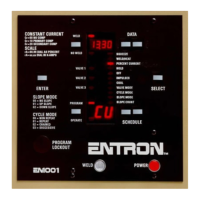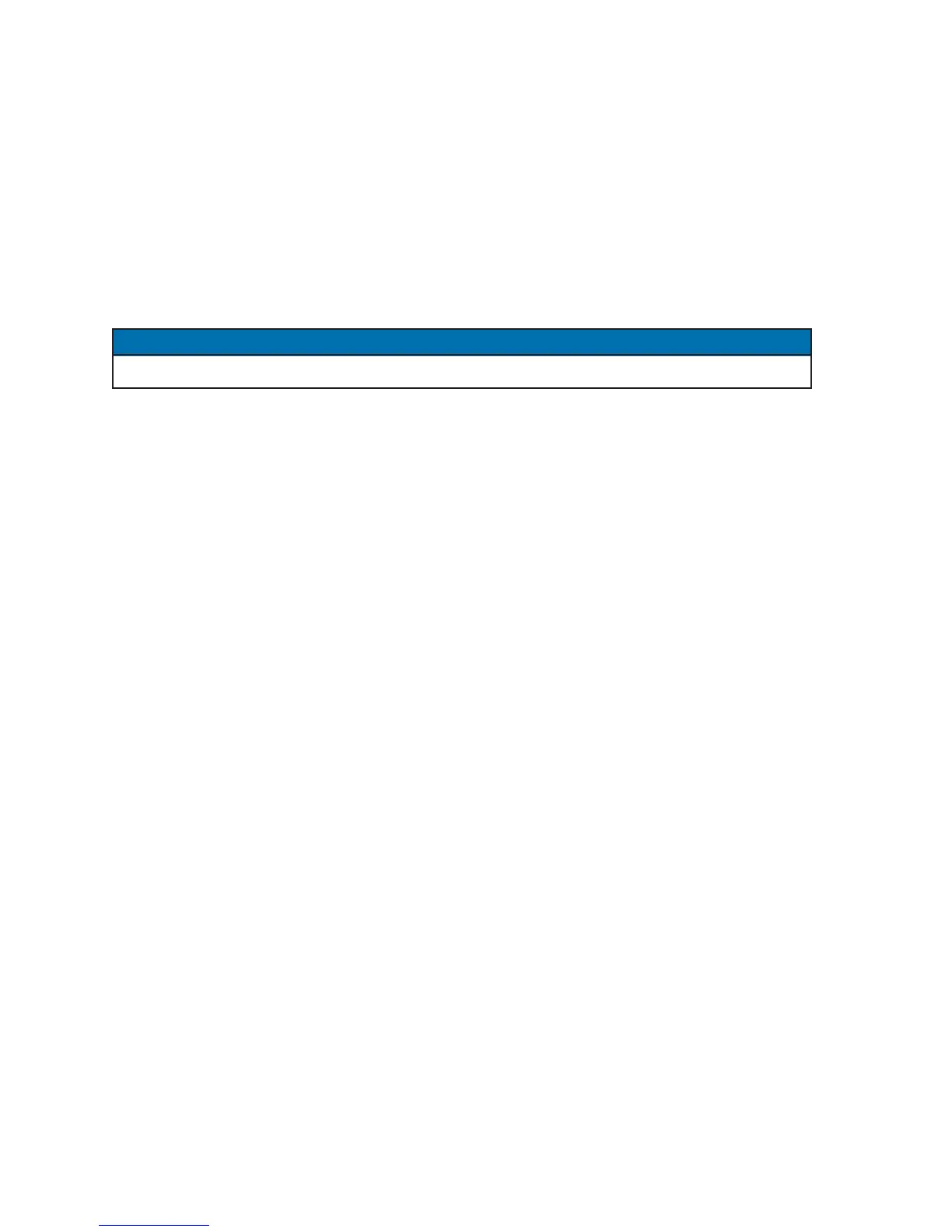Page 70 • 700120S • ENTRON Controls, LLC.
5.4.12 SQUEEZE DELAY –
S.d.S.d.
S.d.S.d.
S.d.
SQUEEZE DELAY is a pre-squeeze which energizes the scheduled valves for the programmed
interval of time. SQUEEZE DELAY occurs after initiation and immediately before the first
SQUEEZE is executed (a form of retraction to position electrodes closer to the work in a REPEAT
sequence).
The length of time added to SQUEEZE time measured in cycles (60 cycles = 1 second).
After initiation on any of the Pilot switches (FS3, etc.), the control’s display will dim slightly
indicating the control is in SQUEEZE DELAY and return to regular intensity for the programmed
SQUEEZE time.
SQUEEZE DELAY occurs only before the first SQUEEZE time when in REPEAT mode.
5.4.13 BLOCKING DELAY –
b.L.b.L.
b.L.b.L.
b.L.
This output enables the user of an air-over-oil gun to have a programmed partial retraction in
the middle of a sequence. The output may be turned off by momentarily opening Emergency
Stop terminals TS1-ES1 and TS1-GND.
BLOCKING DELAY is an interval of time that occurs immediately before (overlapping) the
programmed OFF time interval.
When
PP
PP
P
.O..O.
.O..O.
.O.=
0707
0707
07 and delays have been programmed properly, Valve 3 output will turn on during
the programmed OFF time, starting at the end of BLOCKING DELAY time. It will remain on
after the current sequence until the next initiation occurs.
If the programmed OFF interval is shorter than the programmed BLOCKING DELAY interval,
the programmed OFF will not occur.
If the programmed OFF interval is longer than BLOCKING DELAY, resulting OFF time will
be programmed OFF time minus BLOCKING DELAY time (see Figure 9-15). This means that
BLOCKING DELAY overlaps OFF (after HOLD, coincident with OFF time) which happens
only in a sequence of schedules ending with a CYCLE MODE =
0000
0000
00,
0101
0101
01 or
0303
0303
03.
5.4.14 TURNS RATIO –
t.rt.r
t.rt.r
t.r
..
..
. (EN1001 only)
This parameter is used to set the TURNS RATIO of the transformer.
The TURNS RATIO is necessary when the control is set to PRIMARY CONSTANT CURRENT
mode. When the control is set to PRIMARY CONSTANT CURRENT COMPENSATION or
MONITORING mode, the control only measures the primary current from the sensor, and then
calculates the secondary current by the following equation:
Secondary Current = Primary Current × Turns Ratio of transformer
NOTICE

